Place of origin Western Europe | ||
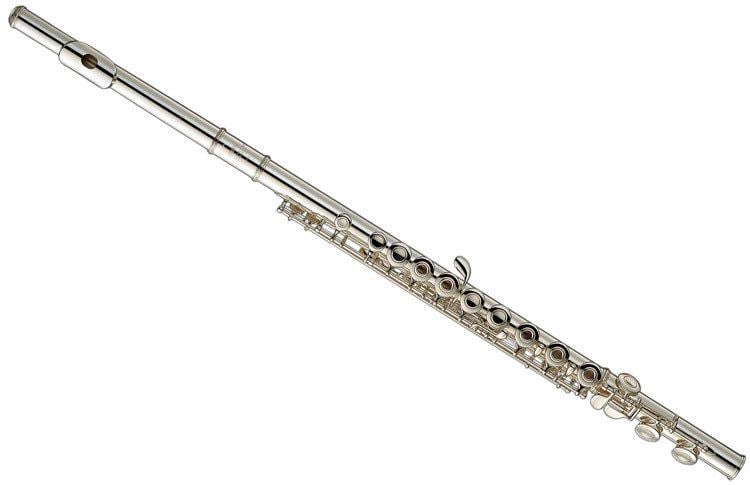 | ||
Other names Transverse flute, Boehm flute, C flute Hornbostel–Sachs classification 421.121.12; (open side-blown flute with fingerholes) Classifications Woodwind instrument, Aerophone | ||
Western concert flute plays oriental music snow in red
The Western concert flute is a transverse (side-blown) woodwind instrument made of metal or wood. It is the most common variant of the flute. A musician who plays the flute is called a flautist, flutist, flute player, or fluter.
Contents
- Western concert flute plays oriental music snow in red
- What is the lowest note that can be played by an instrument
- Predecessors
- Medieval flutes 10001400
- Renaissance to 17th century
- Traverso
- Development
- Boehm flute
- 19th century variants
- Modified Boehm flute designs
- Characteristics
- Construction and materials
- Head joint shape
- Tubing materials
- Pad materials
- Keywork
- Mechanical options
- Classical music
- In jazz and rock
- References
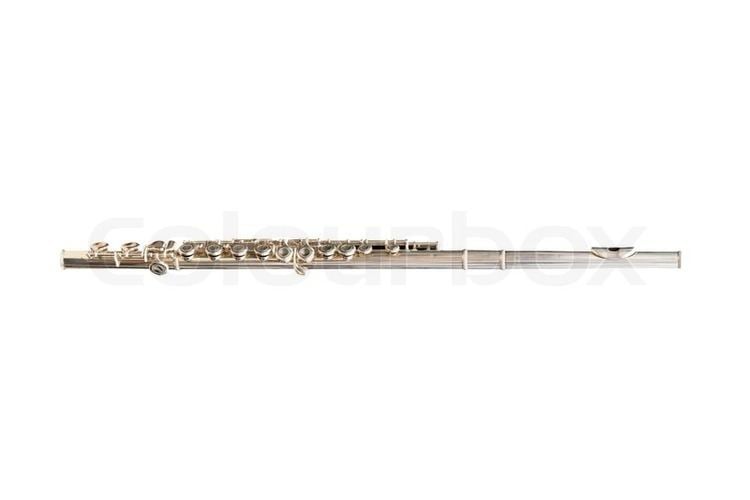
This type of flute is used in many ensembles including concert bands, military bands, marching bands, orchestras, flute ensembles, and occasionally jazz bands and big bands. Other flutes in this family include the piccolo, alto flute, and the bass flute. A large repertory of works has been composed for flute.
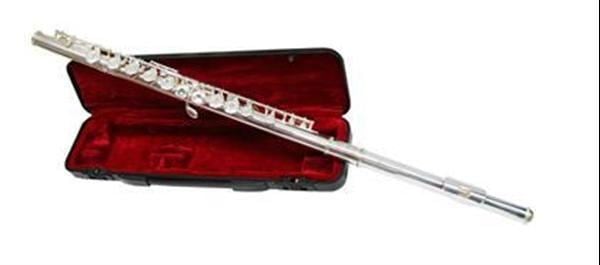
What is the lowest note that can be played by an instrument
Predecessors
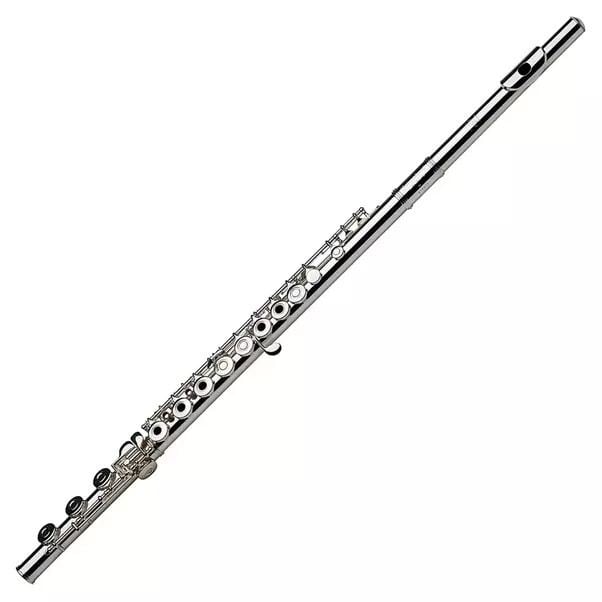
The flute is one of the oldest and most widely used wind instruments. The precursors of the modern concert flute were keyless wooden transverse flutes, similar to modern fifes. These were later modified to include between one and eight keys for chromatic notes.
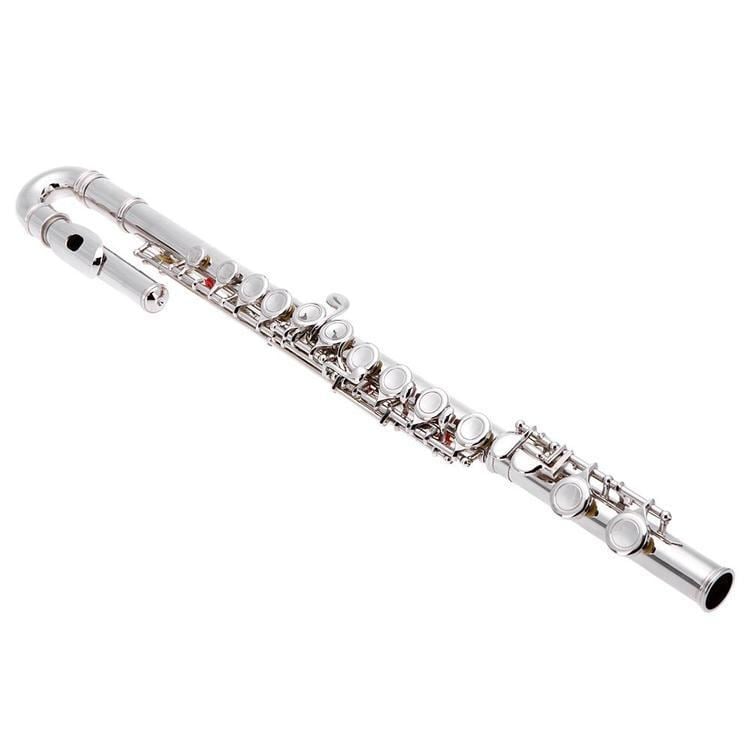
The most common pitch for keyless wooden traverse flutes is "six-finger" D. Keyless traverse flutes continue to be used in folk music (particularly Irish traditional music) and in historically informed performances of Baroque (and earlier) music.
Medieval flutes (1000–1400)
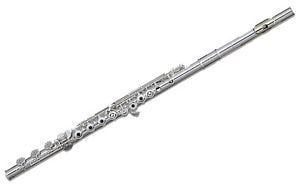
Throughout the 11th, 12th and 13th centuries, transverse flutes were very uncommon in Europe, with the recorder being more prominent. The transverse flute arrived in Europe from Asia, via the Byzantine Empire, where it migrated to Germany and France. These flutes became known as "German flutes", to distinguish them from others, such as the recorder. The flute became used in court music, along with the viol, and was used in secular music, although only in France and Germany. It would not spread to the rest of Europe for nearly a century. The first literary appearance of the transverse flute was made in 1285, by Adenet le Roi in a list of instruments he played. After this, a period of 70 years ensues, where there are few references to the flute.
Renaissance to 17th century
Beginning in the 1470s, a military revival in Europe led to a revival in the flute. The Swiss army used flutes for signaling, and this helped the flute spread to all of Europe. In the late 16th century, flutes began to be used in court and theatre music (predecessors of the orchestra), and the first flute solos. Following the 16th century court music, flutes began appearing in chamber ensembles. These flutes were often used as the tenor voice. However, flutes varied greatly in size and range. This made transposition necessary, which led flutists to use Guidonian hexachords (used by singers and other musicians since their introduction in the 11th century) to transpose music more easily.
During the 16th and early 17th centuries in Europe, the transverse flute was available in several different sizes, in effect forming a consort much in the same way that recorders and other instrument families were used in consorts. At this stage, the transverse flute was usually made in one section (or two for the larger sizes) and had a cylindrical bore. As a result, this flute had a rather soft sound and limited range, and was used primarily in compositions for the "soft consort".
Traverso
During the Baroque period, the transverse flute was redesigned. Now often called the traverso (from the Italian), it was made in three or four sections, or joints, with a conical bore from the head joint down. The conical bore design gave the instrument a wider range and a more penetrating sound, without sacrificing the softer, expressive qualities of the instrument. In addition to chamber music, the traverso began to be used in orchestral music.
In the Baroque era, flutes become used in the scores of opera, ballet and chamber music. With this, composers now wrote music for the flute. These included Praetorius, Schütz, Rebillé and Descoteaux, Quantz, Bach, Telemann, Blavet, Vivaldi and Handel.
Because of the works of such composers, the flute became popular as a solo instrument. However, there were few professional flutists who had the instrument as their main instrument (many had oboe as their main instrument). In 1707, Jacques Martin Hotteterre wrote the first method book on playing the flute: Principes de la flûte traversière. The 1730s brought an increase in operatic and chamber music feature of flutes. The end of this era found the publication of Essay of a Method of Playing the Transverse Flute by Quantz, considered the greatest exposition on flute method of its time.
The orchestras formed in the last half of the 18th century included flutes, which were featured in symphonies and concertos. Throughout the rest of the century the interest in flutes increased, and peaked in the early half of the 19th century. Around this time Friedrich Dülon was one of the best known flutists. The early 19th century saw a great variety in flute designs. Conical bores giving a penetrating sound were used in Vienna, English flutes had a range to low C and played best in flat keys, French flutes gave a softer tone, and German flutes blended best with orchestras. With the romantic era, flutes began to lose favor: Symphony orchestras rather featured brass and strings.
Development
In the nineteenth century Theobald Boehm began to make flutes. Keys were added to the flute, and the taper was changed to strengthen its lower register.
Initially Boehm’s new flute design was not very well accepted, but flutes grew more popular throughout Europe as the century wore on. By the end of the century the Boehm flute had won favor and a flute revival was spurred by composers like Debussy.
With the ability to record sound (beginning in the 1890s), flutes began to regain a popularity not seen since the classical era. Recordings of flute music became increasingly common, with professional flautists spending a great deal of time recording music. The 20th century brought the first recordings of Baroque music on modern flutes.
Boehm flute
The dimensions and key system of the modern western concert flute and its close relatives are almost completely the work of the great flautist, composer, acoustician and silversmith, Theobald Boehm, who patented his system in 1847. It was immediately popular, and spread worldwide in just a few years. Minor additions to and variations on his key system are common but the acoustical structure of the tube remains almost exactly as he designed it. Major innovations were the change to metal instead of wood, large straight tube bore, "parabolic" tapered headjoint bore, very large tone holes covered by keys, and the linked key system which simplified fingering somewhat. The most substantial departures from Boehm's original description are the universal elimination of the "crutch" for the left hand, the almost universal adoption of Briccialdi's thumb key mechanism instead of Boehm's, and the almost universal adoption of a closed-standing G♯ key over an additional G♯ tone hole. Boehm's key system, with minor variations, continues to be regarded as the most effective system of any modern woodwind, allowing trained players to perform with facility in all keys and with extraordinary velocity and brilliance. The modern flute has three octaves plus C7–C♯7–D7 in the fourth octave. Many modern composers used the high D♯7; while such extremes are not commonly used, the modern flute can perform up to an F♯7 in its fourth octave.
19th century variants
The Meyer flute was a popular flute in the mid 19th century. Including and derived from the instruments built by H.F. Meyer from 1850 to the late 1890s, it could have up to 12 keys and was built with head joints of either metal-lined ivory or wood. The final form was a combination of a traditional keyed flute and the Viennese flute, and became the most common throughout Europe and America. This form had 12 keys, body of wood, head joint of metal and ivory, and was common at the end of the century.
Quite at the opposite end of the spectrum, in terms of the complexity of the key system developed by Boehm, was the Giorgi flute, an advanced form of the ancient holed flute. Patented in 1897, the Giorgi flute was designed without any mechanical keys, though the patent allows for the addition of keys as options. Giorgi enabled the performer to play equally true in all musical keys, as does the Boehm system. Giorgi flutes are now rarities, found in museums and private collections. The underlying principles of both flute patterns are virtually identical, with tone holes spaced as required to produce a fully chromatic scale. The player, by opening and closing holes, adjusts the effective length of the tube, and thus the rate of oscillation, which defines the audible pitch.
Modified Boehm flute designs
In the 1950s, Albert Cooper modified the Boehm flute to make playing modern music easier. The flute was tuned to A440, and the embouchure hole was cut in a new way to change the timbre of the flute. These flutes became the most used flutes by professionals and by amateurs.
In the 1980s, Johan Brögger modified the Boehm flute by fixing two major problems that had existed for nearly 150 years: maladjustument between certain keys, and problems between the G and B♭ keys. The result was non-rotating shafts, which gave a quieter sound and less friction on moving parts. Also the modifications allowed for springs to be adjusted individually, and the flute was strengthened. The Brögger flute is only made by the Brannen Brothers and Miyazawa Flutes.
Characteristics
The flute is a transverse (or side-blown) woodwind instrument that is closed at the blown end. The instrument is played by blowing a stream of air over the embouchure hole. The pitch is changed by opening or closing keys that cover circular tone holes (there are typically 16 tone holes). Opening and closing the holes produces higher and lower pitches. The direction and intensity of the air stream also affects the pitch, timbre, and dynamics.
The piccolo is also commonly used in Western orchestras and bands. Alto flutes, pitched a fourth below the standard flute, and bass flutes, an octave below, are also used occasionally.
(B3) C4–C7 (F7–C8)The standard concert flute, also called C flute, Boehm flute, silver flute, or simply flute, is pitched in C and has a range of about three and a half octaves starting from the musical note C4 (middle C). In most cases the flute's highest pitch is C7, however more experienced flautists are able to reach up to F7 (and in some cases C8). Modern flutes may have a longer foot joint (a B-foot), with an extra key to reach B3.
From high to low, the members of the concert flute family include:
Each of the above instruments has its own range. The piccolo reads music in C like the concert flute but sounds one octave higher. The alto flute is in the key of G, and extends the low register range of the flute to the G below middle C. Its highest note is a high G (4 ledger lines above the treble clef staff). The bass flute is an octave lower than the concert flute, and the contrabass flute is an octave lower than the bass flute.
Less commonly seen flutes include the treble flute in G, pitched one octave higher than the alto flute; the soprano flute, between the treble and concert; and the tenor flute or flûte d'amour in B♭ or A, pitched between the concert and alto.
The lowest sizes (larger than the bass flute) have all been developed in the 20th century; these include the sub-bass flute, which is pitched in F, between the bass and contrabass; the subcontrabass flute (pitched in G or C), the contra-alto flute (pitched in G, one octave below the alto), and the double contrabass flute in C, one octave lower than the contrabass. The flute sizes other than the concert flute and piccolo are sometimes called harmony flutes.
Construction and materials
Concert flutes have three parts: the headjoint, the body, and the foot joint. The headjoint is sealed by a cork (or plug which may be made out of various plastics,or metals or less commonly woods). It is possible to make fine adjustments to tuning by adjusting the headjoint cork, but usually it is left in the factory-recommended position around 17.3 mm (0.68 in) from the centre of the embouchure hole for best scale. Gross, temporary adjustments of pitch are made by moving the headjoint in and out of the headjoint tenon. The player makes fine or rapid adjustments of pitch and timbre by adjusting the embouchure, and/or adjusting the position of the flute in relation to the player, i.e., side and out.
Head joint shape
The head-joint tube is tapered slightly towards the closed end. Boehm described the shape of the taper as parabolic. Examination of his flutes did not reveal a true parabolic curve, but the taper is more complex than a truncated cone. The head joint is the most difficult part to construct, because the lip plate and tone hole have critical dimensions, edges and angles, which vary slightly both between manufacturers and in individual flutes, especially where they are handmade. Head joint geometry appears particularly critical to acoustic performance and tone, but there is no clear consensus on a particular shape amongst manufacturers. Acoustic impedance of the embouchure hole appears the most critical parameter. Critical variables affecting this acoustic impedance include: chimney length (hole between lip-plate and head tube), chimney diameter, and radiuses or curvature of the ends of the chimney. Generally, the shorter the hole, the more quickly a flute can be played; the longer the hole, the more complex the tone. Finding a particularly good example of a flute is dependent on play testing. Head joint upgrades are usually suggested as a way to improve the tone of an instrument.
Cheaper student models may be purchased with a curved head to allow younger children with shorter arms to play them.
Tubing materials
Less expensive flutes are usually constructed of brass, polished and then silver-plated and lacquered to prevent corrosion or silver-plated nickel silver (nickel-bronze bell metal, 63% Cu, 29% Zn, 5.5% Ni, 1.25% Ag, 0.75% Pb, alloyed As, Sb, Fe, Sn). Flutes that are more expensive are usually made of more precious metals, most commonly solid sterling silver (92.5% silver), and other alloys including French silver (95% silver, 5% copper), "coin silver" (90% silver), or Britannia silver (95.8% silver). It is reported that old Louis Lot French flutes have a particular sound by nature of their specific silver alloy. Gold/silver flutes are even more expensive. They can be either gold on the inside and silver on the outside, or vice versa. All gold and all platinum flutes also exist. Flutes can also be made out of wood, with African blackwood (grenadilla or Dalbergia melanoxylon) being the most common today. Formerly cocuswood was used but this is hard to obtain today. Wooden flutes were far more common before the early 20th century. The silver flute was introduced by Boehm in 1847 but did not become common until later in the 20th century. Wm. S. Haynes, a flute manufacturer in Boston, Massachusetts, United States, told Georges Barrère that in 1905 he made one silver flute to every 100 wooden flutes but in the 1930s, he made one wooden flute to every 100 silver flutes.
Unusual tubing materials include glass, carbon fiber, and palladium.
Professionals tend to play more expensive flutes made from more expensive materials. However, the idea that different materials can significantly affect sound quality is under some contention, and some argue that different metals make less difference in sound quality than different flautists playing the same flute. Even Verne Q. Powell, a flute maker, admitted (In Needed: A Gold Flute or a Gold Lip?) that "As far as tone is concerned, I contend that 90 percent of it is the man behind the flute".
Most metal flutes are made of alloys that contain significant amounts of copper or silver. These alloys are biostatic because of the oligodynamic effect, and thus suppress growth of unpleasant molds, fungi and bacteria.
Good instruments are designed to prevent or reduce galvanic corrosion between the tube and the key mechanism.
Pad materials
Tone holes are stopped by pads constructed of fish skin (gold-beater's skin) over felt, or in some very low-cost or “ruggedized” flutes, silicone rubber. Accurate shimming of pads on professional instruments to ensure pad sealing is very demanding of technician time. In the time-honored method, pads are seated on paper shims sealed with shellac. A recent development is "precision" pads fitted by a factory-trained technician. Student model flutes are more likely to have pads bedded in thicker materials like wax or hot melt glue. Larger sized closed hole pads are also held in with screws and washers. Synthetic pads appear more water resistant but may be susceptible to mechanical failure (cracking).
Keywork
The keys can be made of the same or different metals as the tubing, nickel silver keys with silver tubing, for example. Flute key axles (or "steels") are typically made of drill rod or stainless steel. These mechanisms need periodic disassembly, cleaning, and relubrication, typically performed by a trained technician, for optimal performance. James Phelan, a flute maker and engineer, recommends single-weight motor oil (SAE 20 or 30) as a key lubricant demonstrating superior performance and reduced wear, in preference to commercial key oils).
The keywork is constructed by lost-wax castings and machining, with mounting posts and ribs silver-soldered to the tube. On the best flutes, the castings are forged to increase their strength.
Most flute keys have needle springs, made of phosphor bronze, stainless steel, beryllium copper, or a gold alloy. The B thumb keys typically have flat springs. Phosphor bronze is by far the most common material for needle springs because it is relatively inexpensive, makes a good spring, and is resistant to corrosion. Unfortunately, it is prone to metal fatigue. Stainless steel also makes a good spring and is resistant to corrosion. Gold springs are found mostly in high-end flutes because of its cost.
Mechanical options
Classical music
An early version of Antonio Vivaldi's La tempesta di mare flute concerto was possibly written around 1713–1716, and would thus have been the first concerto for the instrument, as well as the earliest scoring of a high F6, a problematic note for the Baroque flute of that period.
In jazz and rock
Flutes were rarely used in early jazz. Drummer and bandleader Chick Webb was among the first to use flutes in jazz, beginning in the late 1930s. Frank Wess was among the first noteworthy flautists in jazz, in the 1940s. Since Boehm's fingering is used in saxophones as well as in concert flutes, many flute players "double" on saxophone for jazz and small ensembles and vice versa.
Since 1950, a number of notable performers have used flutes in jazz. Frank Foster and Frank Wess (Basie band), Jerome Richardson (Jones/Lewis big band) and Lew Tabackin (Akiyoshi/Tabackin big band) used flutes in big band contexts. In small band contexts notable performers included Bud Shank, Herbie Mann, Joe Farrell, Rahsaan Roland Kirk, Charles Lloyd, Hubert Laws and Moe Koffman. Several modal jazz and avant-garde jazz performers have utilized the flute including Eric Dolphy, Sam Rivers and James Spaulding.
Jethro Tull is probably the best-known rock group to make regular use of the flute, played by their frontman, Ian Anderson. An alto flute is briefly heard in The Beatles' song "You've Got to Hide Your Love Away", played by John Scott. The Beatles would later feature a flute more prominently in their single "Penny Lane".
Other groups that have used the flute in pop and rock songs include The Moody Blues, Chicago, Australian group Men At Work, the Canadian progressive rock group Harmonium, Dutch bands Focus and early Golden Earring, and the British groups Traffic, Genesis, Gong (although their flautist/saxophonist, Didier Malherbe, was French), Hawkwind, King Crimson, Camel and Van der Graaf Generator.
